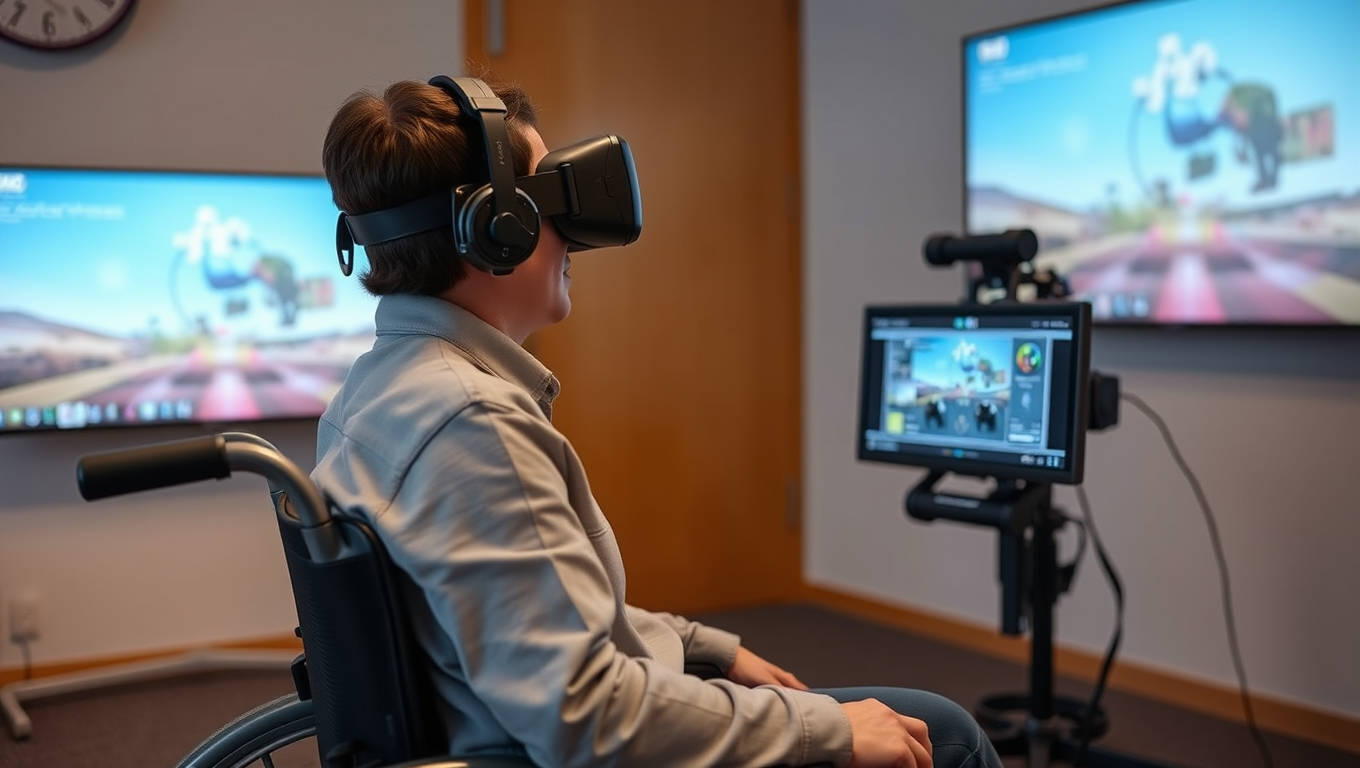While we try to keep things accurate, this content is part of an ongoing experiment and may not always be reliable.
Please double-check important details — we’re not responsible for how the information is used.
Alternative Medicine
Breaking Down Barriers: A Customizable VR Solution for People with Mobility Limitations
Researchers have created a method that makes virtual reality (VR) more accessible to people with mobility limitations.

Alternative Medicine
“Skin in a Syringe”: Breakthrough Technology Heals Burns without Scars
Scientists in Sweden have developed a groundbreaking “skin in a syringe” — a gel packed with live cells that can be applied directly to wounds or even 3D-printed into skin grafts. Designed to help the body build functional dermis rather than scar tissue, the innovation combines fibroblast cells on gelatin beads with a hyaluronic acid gel, held together using click chemistry. In a parallel advance, the team also created elastic hydrogel threads that can form tiny, fluid-carrying channels, paving the way for artificial tissues and organoid development.
Alternative Medicine
A 30-Minute Workout That Could Help Slash Cancer Cell Growth
A vigorous workout can spark anti-cancer proteins, cut cancer cell growth, and help survivors fight recurrence by reducing inflammation and improving body composition.
Alternative Medicine
Breaking Barriers in Diabetic Wound Healing: A Revolutionary “Smart” Gel Accelerates Blood Flow and Restores Tissue Repair
A new gel-based treatment could change the way diabetic wounds heal. By combining tiny healing messengers called vesicles with a special hydrogel, scientists have created a dressing that restores blood flow and helps wounds close much faster. In tests, the treatment healed diabetic wounds far quicker than normal, while also encouraging the growth of new blood vessels. Researchers believe this innovation could one day help millions of people with slow-healing wounds caused by diabetes and possibly other conditions.
-

 Detectors6 months ago
Detectors6 months agoA New Horizon for Vision: How Gold Nanoparticles May Restore People’s Sight
-

 Earth & Climate7 months ago
Earth & Climate7 months agoRetiring Abroad Can Be Lonely Business
-

 Cancer7 months ago
Cancer7 months agoRevolutionizing Quantum Communication: Direct Connections Between Multiple Processors
-

 Albert Einstein8 months ago
Albert Einstein8 months agoHarnessing Water Waves: A Breakthrough in Controlling Floating Objects
-

 Chemistry7 months ago
Chemistry7 months ago“Unveiling Hidden Patterns: A New Twist on Interference Phenomena”
-

 Earth & Climate7 months ago
Earth & Climate7 months agoHousehold Electricity Three Times More Expensive Than Upcoming ‘Eco-Friendly’ Aviation E-Fuels, Study Reveals
-

 Diseases and Conditions8 months ago
Diseases and Conditions8 months agoReducing Falls Among Elderly Women with Polypharmacy through Exercise Intervention
-

 Agriculture and Food7 months ago
Agriculture and Food7 months ago“A Sustainable Solution: Researchers Create Hybrid Cheese with 25% Pea Protein”





























